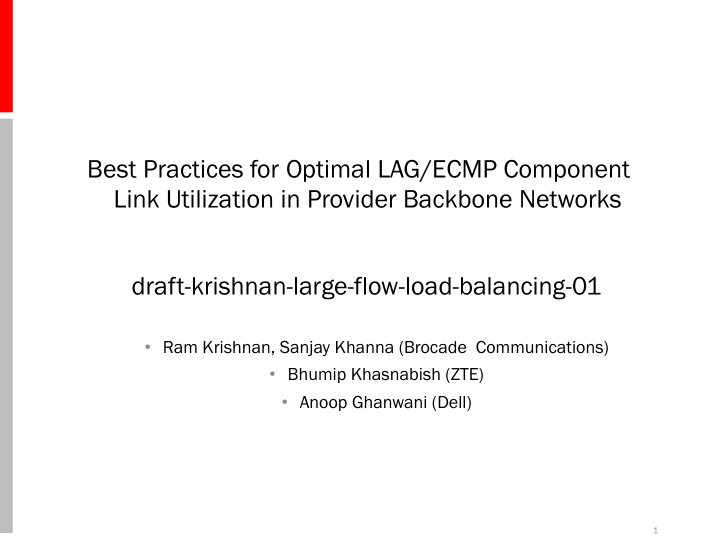



Best Practices for Optimal LAG/ECMP Component Link Utilization in Provider Backbone Networks draft-krishnan-large-flow-load-balancing-01 • Ram Krishnan, Sanjay Khanna (Brocade Communications) • Bhumip Khasnabish (ZTE) • Anoop Ghanwani (Dell) 1
CURRENT ISSUES • Hash based techniques for LAG/ECMP are flow unaware • Do not distinguish between large and small flows • Over-utilization/congestion of certain links • LAGs of different member link speeds pose challenges • E.g. 2x100G and 20x10G LAG are not equal • Some networks may lack end-to-end visibility e.g. transit networks • Global optimization techniques, e.g. SDN/Openflow, may not be feasible 2
SOLUTION • “Targeted" local optimization is used for hotspots • Techniques are applied within a single network node • Best practice techniques • Long-lived large flow definition • Long-lived large flow identification • sFlow/Netflow sampling • Automatic hardware identification • Egress link congestion notification • Long-lived large flow load-balancing • Manual (Operator driven), Automatic • No dedicated link(s) vs dedicated link(s) for large flows 3
NEXT STEPS • Adopt as a work item in OPSAWG • Network Operator interest • Operators are facing this problem today • Vendor interest 4
ADDITIONAL WORK ITEMS • Standardized data model • Router policy configuration for long-lived large flows detection and load-balancing • Moving detected long-lived large flows from router to central entity • Applying these local optimization techniques for Data Centers • Use case • Switches/routers from different vendors; mix of 10G/100G • Global optimization techniques may not be feasible • Switch/router programming interface • Openflow besides normal Ethernet switching 5
Recommend
More recommend